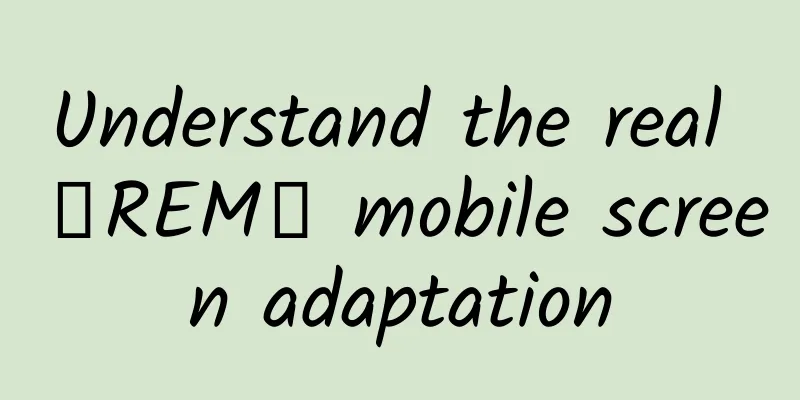How to make it difficult for users to refuse "Inviting users to review"?

The feature of "invite users to review" is available in many applications, and I think it is worth thinking about. Now let's talk about how to make this function more elegant. 1. Demand Analysis 1. Why do we need to guide users to review on the app store? Because good reviews need to be retained in the app store to improve rankings. 2. What needs will users have regarding the evaluation function? When problems arise, users need a stable outlet for complaints and suggestions to get substantive feedback and share it with the public in exchange for attention and a sense of accomplishment. When the user experience is good, people will be willing to share it with more people, share it with friends to bring valuable information to acquaintances, and share it with the public in exchange for attention and a sense of accomplishment. However, due to the special (gao) design (ti) (yan) of the App Store, the cost of gaining a sense of accomplishment on it is too high. At the same time, it is very strange to actively share a bad app with the public through other channels (such as Weibo), so users do not have this demand (unless the app is really bad and has a big hit). ① Stable entry to report problems and get substantive feedback ② Share good experiences with friends 3. What tasks does the guidance function accomplish? From 1 and 2, we can see that users will neither want to report problems through a random pop-up window, nor will they want to actively review the app store through it. Therefore, the problem feedback entrance should be placed in a stable place where users can find it after learning: Personal Center – Settings – Opinions and Feedback or Customer Service Entrance. At the same time, users who raise opinions need to be given timely, substantive and sincere feedback. After an excellent experience process, prompt them to share with friends. This should not be placed together with the guide to comments under normal circumstances, as it can easily distract users and make them choose to share instead of rating. Now the guidance function has to complete a simple guidance function. ①Direct users to the app store ② Guide users to make positive comments 2. Rule Design 1. How to induce users to give positive reviews in the app store? I think there is only one way for non-core users: inducement. But now, whether it is iOS or Android, after the app guides the user to the market, it is impossible to accurately know whether the user has made a review, let alone whether the user has made a positive review. Then there are only two ways: ① The user provides evaluation evidence, and the app manually reviews and issues rewards. If you do this, the difficulty is no different from brushing orders, so don't be embarrassed and brush orders. ② Provide appropriate rewards and take advantage of users’ desire to give a thumbs-up to the app. The reward cannot be too much, nor too little. Too much may cause people to give rewards without giving comments. Too little may make them unattractive. So how much to give is still a problem. As for core users, inducements are necessary, but what is more important is affection. Filter out these users and send them a loving private message. ① Use rewards to guide mainstream users to choose to leave the process and go to the app store. Use appropriate reward strength and appropriate rolling and cuteness to win the user's momentary weakness and give them a like. ② Use sentiment and affection to persuade core users to actively review the app in the app store, but you need to prevent users from being too critical of the app when persuading them (if you are not confident in the copywriting , leave a small entry for complaints. But this is not necessary) 2. Which types of apps need AppStore ranking and reviews the most? What are their characteristics? Tools and games . Both types of apps have strong task scenarios ①Users of gaming apps seek a sense of entertainment and accomplishment, and upgrade their levels by completing tasks. ② The situation of tools is more complicated, but there are relatively clear task paths in use, and users are helped by completing these tasks. 3. How to design rewards for these two types of apps?
|
>>: How to do competitive product analysis report as a workplace rookie!
Recommend
BYD's blade battery receives order from Hyundai Motor and is expected to be supplied overseas next year
According to media reports citing insiders, BYD&#...
Cleverly use leverage to attract 1 million users
How to define seed users ? Three conditions for d...
Shanghai Auto Show opens tomorrow with 113 new cars making their global debut
The 17th Shanghai International Auto Show will op...
60 technical experiences summarized in daily Android development
[[181259]] 1. All Activities can inherit from Bas...
A new turning point in the online drama industry from Sohu's self-produced drama "The Hypnotist"
The exclusive drama "The Hypnotized Hypnotis...
How to increase followers quickly on Tik Tok? 7 tips to increase followers on Douyin
The popular short video Douyin has made a lot of ...
Body? Consciousness? Which one is the real me?
Let's talk about a mind-blowing hypothesis. I...
The Secret of Zircon: I Know What Dinosaur Fossils Went Through
More than 70 million years ago, tens of thousands...
As a new app, you can't miss these free resources
For a new app, you may hope to get some market re...
Winter Olympics Technology in Pictures | Chinese women's ice hockey team returns to the Winter Olympics after 12 years! Let's take a look at the physics behind ice hockey's killer moves
At 12:05 noon on the 3rd, the Chinese women's...
Ministry of Industry and Information Technology: Special rectification will be carried out on these eight types of APP behaviors
[[283734]] On November 25, the Ministry of Indust...
Thousands of children are injured or killed every year! Driving with a child without it is risking your life
Do you need to install a safety seat when driving...
If you collect all the farts from cows in a day, you can actually boil 20 liters of water?
Global warming has exacerbated glacier melting an...
I encountered a red light once and I encountered red lights all the way. Is the traffic jam caused by traffic lights?
When you are driving on the road and you encounte...









